Review: BlackBerry Pearl
If you've never used or held a Blackberry before, the Pearl simply looks elegant. The smooth, slim shape and dark color scheme give the Pearl a classy look. With the screen off, it doesn't look geeky or even like a Blackberry.
If you've ever handled a Blackberry before, the Pearl is simply shocking. You'll wonder what happened to your old Blackberry. The Pearl is significantly thinner and smaller - about half the volume - of even the smallest 7100 series devices. It makes the 8700s look positively huge and clunky.
The Pearl is quite small for a smartphone - even a smartphone with a numeric keyboard. Considering it has 2 extra columns of keys for its hybrid keyboard, the Pearl's size is even more impressive. Its thinness is the most impressive aspect. You wonder how there's room for circuit boards and screens and such inside, especially when you see how large the battery is.
Like the SLVR and other North American thin candy bar style phones, the Pearl looks wide, but only because it is thin. In truth it is not any wider (or taller) than the SLVR or many other phones. But it looks wide because its shape accentuates its thinness. Not only is it the same width as your average candybar, but the sides have mitered edges - visually subtracting size and making it easier and more comfortable to grip than similarly shaped phones.
It is easy to wrap your hands around the Pearl, and despite the glossy finish, it stays firmly planted in your palm. The plastic body doesn't have the weight of a metal phone, but it still has a good amount of heft so that it doesn't feel cheap. The solid fit and finish of the plastics add to the sense of quality. The Pearl does not creak when you twist or grip it like many plastic phones.
However, over time the battery cover, which comprises the entire back of the phone, started to bow out. It did not make the phone feel less solid, but the springy feeling it created when gripping the phone made the phone feel a bit cheaper.
Keypad
The keyboard on the Pearl has been a source of much contention. Not because of its hybrid nature; most people do not have a serious problem with the two-letters-per-key setup. Nor do people have a problem with the size or layout of the keys. They are each big enough to press without hitting other keys, even though there is no space between them. (Though we'll come back to this issue in a moment.)
Instead it is the feel of the keyboard that people seem to have issue with. The keys are mounted on a rubber sheet that has a raised dimple for each key. When keys are pressed in, the have a nice solid click to them and spring right back. But the keys don't just press directly down. If you rest your thumb on top of a key or keys, you can be move them around from side to side or up and down. Being able to brush the keys aside as you move your thumbs across them makes the keyboard feel flimsy, as it's rare you only press directly down on a key and don't touch any other keys on the way. Fortunately this doesn't affect your ability to type on the Pearl.
Though the keys are each large enough to use, they are by no means large. This is not a problem when typing, but it is a problem for the navigation keys. even though these keys are used more often and are more important, they are no larger and no different from any of the other keys. Thus they are difficult to identify without actually looking at the keypad - even the send and end keys, which are on the corners. This means you actually have to look at the keypad to answer the phone, which is odd and a bit embarrassing, actually.
The Pearl is also RIM's first Blackberry with a trackball instead of a scroll wheel. In most cases the trackball is just used to move up and down, so it's difficult to tell how accurate it is. The most common use for moving it in all four major directions is navigating around the grid menu, and for this it works very well. However in every other application where the trackball is used to move freely in all directions, or even just left and right, it works poorly at best. Most applications that require more than up and down navigation (Maps, Brickbreaker, the camera, etc) are unusable. Because this is the first Blackberry with a trackball, and the first one we have reviewed, it is difficult to tell whether this is the fault of the trackball itself or of the software.
There are two customizable shortcut buttons, one on either side of the phone. Each one can open any application (or really anything assigned an icon in the main menu), but cannot activate any deeper options. Above the shortcut key on the right are the volume keys. They stick out from the side of the phone enough that they are easy to feel out and press without looking during a conversation.


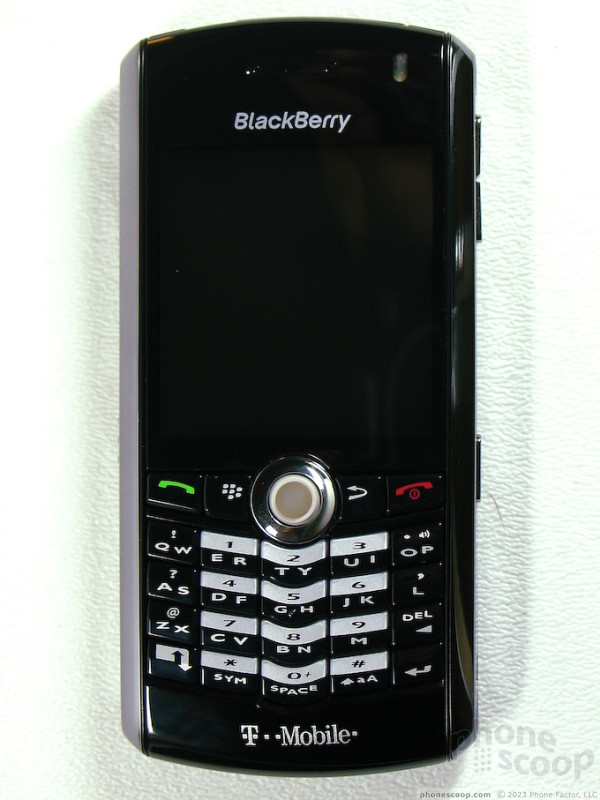










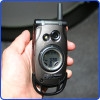 CTIA Fall 2006
CTIA Fall 2006
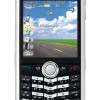 Blackberry Pearl To Launch on T-Mobile Sept. 12
Blackberry Pearl To Launch on T-Mobile Sept. 12
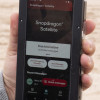 Qualcomm Taps Iridium for Satellite Connectivity
Qualcomm Taps Iridium for Satellite Connectivity
 iPhone 15 Series Goes All-In on USB-C and Dynamic Island
iPhone 15 Series Goes All-In on USB-C and Dynamic Island
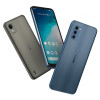 Nokia Refreshes Entry-Level Android Lineup for US
Nokia Refreshes Entry-Level Android Lineup for US
 BlackBerry Pearl 8100
BlackBerry Pearl 8100








